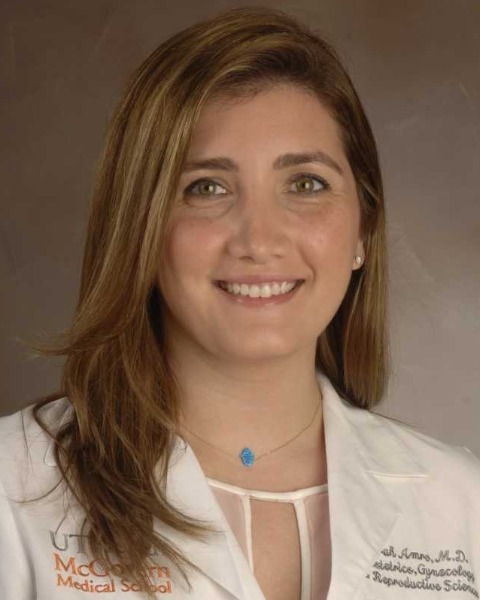Oral Concurrent Session 7 - Clinical Obstetrics & Postpartum
Oral Concurrent Sessions
(70) Management Approaches for Placenta Accreta Spectrum - Not a one size fits all approach

Farah H. Amro, MD
Assistant Professor
McGovern Medical School at The University of Texas Health Science Center at Houston (UTHealth)
Houston, TX, United States.jpg)
Michal Fishel Bartal, MD (she/her/hers)
Maternal Fetal Medicine Faculty
McGovern Medical School at UTHealth Houston, Sheba Medical Center, Tel Hashomer, Sackler School of Medicine, Tel Aviv University, Tel Aviv, Israel
Houston, TX, United States
Edgar Hernandez Andrade, MD, PhD (he/him/his)
Professor
McGovern Medical School at UTHealth Houston
Houston, TX, United States- EN
- LP

Jennie Coselli, MD
MFM Fellow
Department of Obstetrics, Gynecology and Reproductive Sciences McGovern Medical School at The University of Texas Health Science Center at Houston (UTHealth)
Houston, TX, United States- ND
Nahla Daye, MD
McGovern Medical School at The University of Texas Health Science Center at Houston (UTHealth)
Houston, TX, United States - SS
Sandra Sadek, MD
McGovern Medical School at The University of Texas Health Science Center at Houston (UTHealth)
Houston, TX, United States 
Ramesha Papanna, MD, MPH
Professor
McGovern Medical School at UTHealth Houston
Houston, TX, United States- SB

Primary & Presenting Author(s)
Coauthor(s)
The incidence of placenta accreta spectrum (PAS) has increased, and it causes substantial morbidity and mortality. Cesarean hysterectomy is the standard treatment for PAS in the United States, however it frequently leads to major morbidity. At our center we offer three approaches to manage PAS, and the objective of this study was to compare maternal outcomes as a result of these different management strategies.
Study Design:
Prospective cohort study at a Level IV academic center (January 2020 to July 2023) of individuals with ultrasound suspected PAS that had three different planned PAS management approaches:1. Cesarean hysterectomy (CH), 2. Delayed Interval hysterectomy (hysterectomy performed 4-5 weeks after delivery) (DH) 3. Conservative Management (no planned hysterectomy) (CM). The data was analyzed according to planned management protocol. As an alternative option to CH, CM was offered starting in 2020 and DH as of 2022. The primary outcome was composite acute morbidity (within 24 hours from cesarean delivery or hysterectomy) and composite delayed morbidity ( >24 hours postoperative).
Results:
A total of 60 individuals had ultrasound suspected PAS, management planned was: CH for 29 (48%), DH for 16 (27%), CM for 15 (25%). There were no differences in baseline maternal characteristics between the groups (age, race, BMI, chronic hypertension, diabetes mellitus). The type of PAS by ultrasound and placental pathology was similar between all groups, although there was a trend towards more placenta incretas and percretas in the DH and CM groups (Table ).The planned procedure was performed in 26/29 (90%) CH group, 13/16 (81%) DH group, 4/15 (27%) CM group (3/15 in CM group had a delayed hysterectomy due to patient request). DH and CM groups were less likely to require a blood transfusion, and had significantly less composite acute morbidity. The composite postoperative morbidity was similar between the three groups (Table).
Conclusion:
Our results suggest that delayed hysterectomy and conservative management can be considered as viable approaches for management of PAS.

